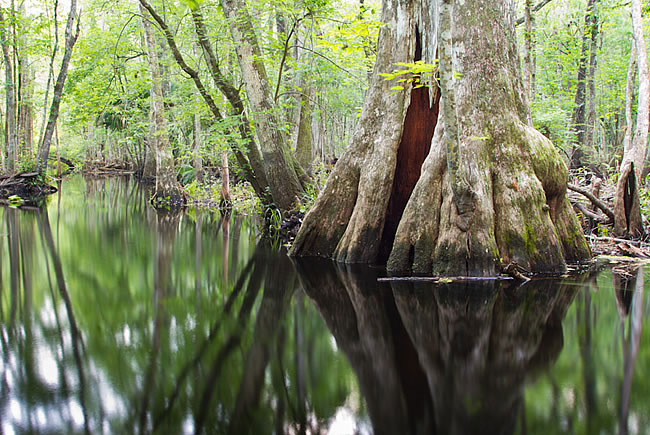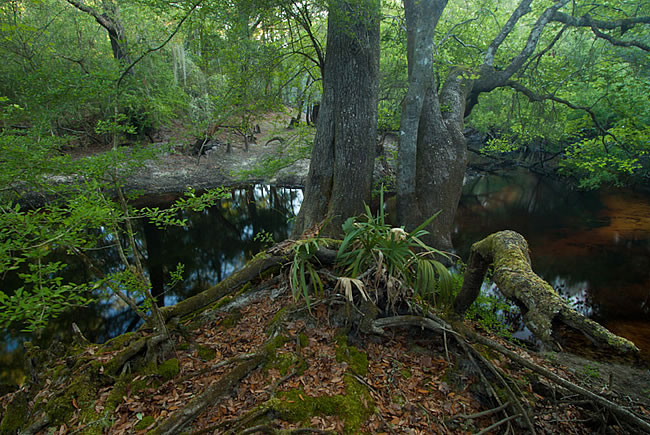SHARE:

Mark Howard
Editor's Page
What Makes Florida ... Florida
This year, the state will take in about $1.4 billion from taxes on documents involving real estate titles, mortgages, liens and the like (about 2% of its total budget). A labyrinthine web of formulas and laws carves that documentary stamp tax money into fiscal slices and distributes it like cold cuts throughout state government. Broadly speaking, however, it’s used for four purposes.
A little more than a quarter (27%) of it ends up in the state’s general revenue pot, which the Legislature disposes of as it wishes.
The rest of the money is divvied up among 20 or so state “trust funds” — pots of money that finance narrowly defined programs or activities within various state agencies. Laws set out precisely what percentage of the total doc stamp revenue a fund receives; the “State Game Trust Fund — Land Management,” administered by the Department of Agriculture, gets .39248%, for example. It’s a system only a bean counter could love.
The trust funds cluster around three main uses: One set of funds, which gets about 9% of the total, finances affordable housing programs. Another group of funds pays for economic development activities — relocation assistance for companies moving to Florida — or transportation projects. Those funds, including the economic development “superfund” created by the Legislature in 2011, get about 16% of the total.
The fourth main use is the reason for this column: Nearly half the doc stamp money — 48%, almost $700 million — is designated for trust funds involving various environmental programs and activities, ranging from control of invasive plants to water quality assurance to land acquisition.
That allocation reflects Florida’s three-decade commitment to preserving the state’s natural environment, which remains one of the few truly unifying forces in Florida and the single most important economic development asset everywhere in Florida.
Starting in the late 1980s, during the administration of Republican Gov. Bob Martinez, Florida committed itself to a program of acquiring environmentally important land. Since 1990, the program — reconstituted and strengthened as Florida Forever under Gov. Jeb Bush, who completely understood the links between the environment and the economy — has bought more than 2.5 million acres and has received as much as $300 million a year in state funding.
In 2013-14, a big chunk of the doc stamp money — and the state’s commitment to land acquisition — comes into play. The lion’s share of the environmental-related allocation, you see, doesn’t flow into trust funds, but rather goes for debt service on bonds that were issued to buy land or conservation easements under the Florida Forever program and for Everglades restoration.
In 2012-13, $430.5 million went for debt service on those bonds. In 2013-14, a number of the bonds will be repaid, and the amount needed for debt service on the remaining bonds will fall to about $174 million. That will free up more than $250 million in doc stamp revenue.
A law specifies where the money is supposed to go if it’s not needed for debt service, but lawmakers, of course, can change that law, and the reality is that the money will be up for grabs.
There will be plenty of grabbing. Legislators are hungry for more general revenue. Even in a state swimming in foreclosures and depressed home prices, affordable housing builders will likely look for a few more dollars. Gov. Rick Scott may look to deepen the pot of economic development money available to throw at a high-profile corporate relocation.
Meanwhile, a coalition of environmental groups, typically tough to get on the same page, has combined forces to propose a “Florida Water and Land Legacy” constitutional amendment that would earmark a third of all doc stamp revenue to go into an existing environmental-related trust fund. The effort, including the Trust for Public Land, Audubon Florida, the Florida Wildlife Federation, the Nature Conservancy, 1000 Friends of Florida, Sierra Club and others, is in the fundraising and signature-gathering stage, with an eye toward getting the amendment on the 2014 ballot.
It may be wise to build some kind of base funding level for land acquisition into the state constitution. Voters can be the best judge of that. From a practical standpoint, the amendment would essentially just lock in more or less the status quo in terms of how much the state is spending on land acquisition.
Whatever the fate of the proposed amendment, the money that’s freed up when the bonds are repaid ought to be invested back into land acquisition. It should go without saying that conservation lands aren’t just pretty places where no one can build a housing development. They’re vital to water resources, to the state’s tourism industry, to preserving agriculture as a piece of the state’s economy, to fish and wildlife, and to the environmental ethic that transcends the state’s regional differences.
Vital, ultimately, to Florida’s identity as a place unlike any other in the U.S.































Comments